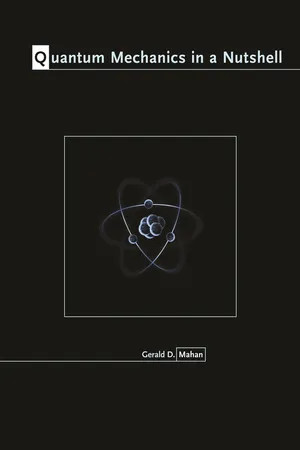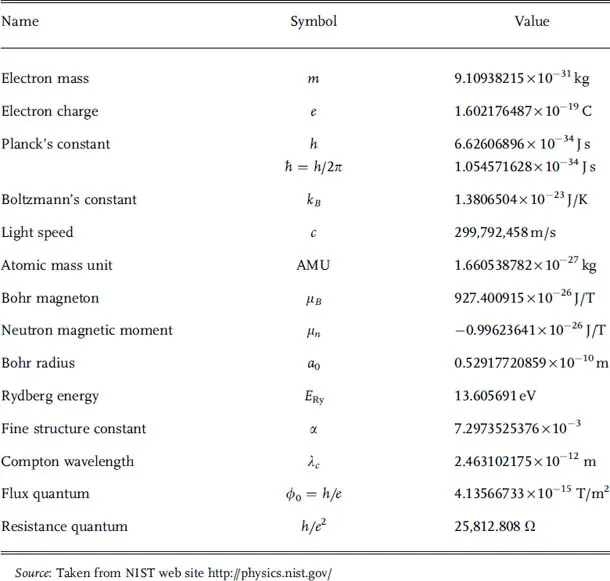
- 416 pages
- English
- ePUB (mobile friendly)
- Available on iOS & Android
Quantum Mechanics in a Nutshell
About this book
Covering the fundamentals as well as many special topics of current interest, this is the most concise, up-to-date, and accessible graduate-level textbook on quantum mechanics available. Written by Gerald Mahan, a distinguished research physicist and author of an acclaimed textbook on many-particle physics, Quantum Mechanics in a Nutshell is the distillation of many years' teaching experience.
Emphasizing the use of quantum mechanics to describe actual quantum systems such as atoms and solids, and rich with interesting applications, the book proceeds from solving for the properties of a single particle in potential; to solving for two particles (the helium atom); to addressing many-particle systems. Applications include electron gas, magnetism, and Bose-Einstein Condensation; examples are carefully chosen and worked; and each chapter has numerous homework problems, many of them original.
Quantum Mechanics in a Nutshell expertly addresses traditional and modern topics, including perturbation theory, WKBJ, variational methods, angular momentum, the Dirac equation, many-particle wave functions, Casimir Force, and Bell's Theorem. And it treats many topics--such as the interactions between photons and electrons, scattering theory, and density functional theory--in exceptional depth.
A valuable addition to the teaching literature, Quantum Mechanics in a Nutshell is ideally suited for a two-semester course.
- The most concise, up-to-date, and accessible graduate textbook on the subject
- Contains the ideal amount of material for a two-semester course
- Focuses on the description of actual quantum systems, including a range of applications
- Covers traditional topics, as well as those at the frontiers of research
- Treats in unprecedented detail topics such as photon-electron interaction, scattering theory, and density functional theory
- Includes numerous homework problems at the end of each chapter
Frequently asked questions
- Essential is ideal for learners and professionals who enjoy exploring a wide range of subjects. Access the Essential Library with 800,000+ trusted titles and best-sellers across business, personal growth, and the humanities. Includes unlimited reading time and Standard Read Aloud voice.
- Complete: Perfect for advanced learners and researchers needing full, unrestricted access. Unlock 1.4M+ books across hundreds of subjects, including academic and specialized titles. The Complete Plan also includes advanced features like Premium Read Aloud and Research Assistant.
Please note we cannot support devices running on iOS 13 and Android 7 or earlier. Learn more about using the app.
Information
1 Introduction
1.1 Introduction







1.2 Schrödinger’s Equation



Table of contents
- Cover
- Half title
- Title
- Copyright
- Contents
- Preface
- 1 Introduction
- 2 One Dimension
- 3 Approximate Methods
- 4 Spin and Angular Momentum
- 5 Two and Three Dimensions
- 6 Matrix Methods and Perturbation Theory
- 7 Time-Dependent Perturbations
- 8 Electromagnetic Radiation
- 9 Many-Particle Systems
- 10 Scattering Theory
- 11 Relativistic Quantum Mechanics
- Index